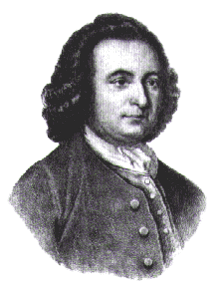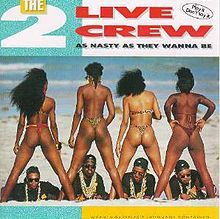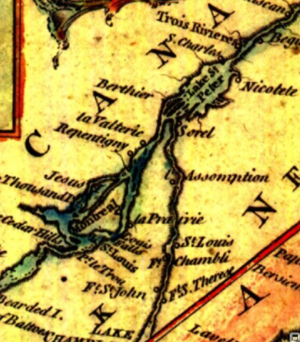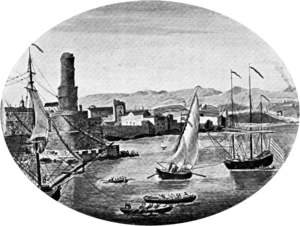This is your morning Open Thread. Pour your favorite beverage and review the past and comment on the future.
Find the past “On This Day in History” here.
Click on image to enlarge
June 12 is the 163rd day of the year (164th in leap years) in the Gregorian calendar. There are 202 days remaining until the end of the year.

On this day in 1776, Virginia adopts George Mason’s Declaration of Rights
The assembled slaveholders of Virginia promised to “the good people of VIRGINIA and their posterity” the equal right to life, liberty and property, with the critical condition that the “people” were white men. These same white men were guaranteed that “all power” would be “vested in, and consequently derived from” them. Should a government fail to represent their common interest, a majority of the same held the right to “reform, alter or abolish” the government.
The Declaration was adopted unanimously by the Fifth Virginia Convention at Williamsburg, Virginia on June 12, 1776 as a separate document from the Constitution of Virginia which was later adopted on June 29, 1776. In 1830, the Declaration of Rights was incorporated within the Virginia State Constitution as Article I, but even before that Virginia’s Declaration of Rights stated that it was ‘”the basis and foundation of government” in Virginia. A slightly updated version may still be seen in Virginia’s Constitution, making it legally in effect to this day.
It was initially drafted by George Mason circa May 20, 1776; James Madison assisted him with the section on religious freedom. It was later amended by Thomas Ludwell Lee and the Convention to add a section on the right to uniform government (Section 14). Patrick Henry persuaded the Convention to delete a section that would have prohibited bills of attander, arguing that ordinary laws could be ineffective against some terrifying offenders.
Mason based his initial draft on the rights of citizens described in earlier works such as the English Bill of Rights (1689), and the Declaration can be considered the first modern Constitutional protection of individual rights for citizens of North America. It rejected the notion of privileged political classes or hereditary offices such as the members of Parliament and House of Lords described in the English Bill of Rights.
The Declaration consists of sixteen articles on the subject of which rights “pertain to [the people of Virginia]…as the basis and foundation of Government.” In addition to affirming the inherent nature of natural rights to life, liberty, and property, the Declaration both describes a view of Government as the servant of the people, and enumerates various restrictions on governmental power. Thus, the document is unusual in that it not only prescribes legal rights, but it also describes moral principles upon which a government should be run.
The Virginia Declaration of Rights heavily influenced later documents. Thomas Jefferson is thought to have drawn on it when he drafted the United States Declaration of Independence one month later (July 1776). James Madison was also influenced by the Declaration while drafting the Bill of Rights (completed September 1787, approved 1789), as was the Marquis de Lafayette in voting the French Revolution’s Declaration of the Rights of Man and of the Citizen (1789).
The importance of the Virginia Declaration of Rights is that it was the first constitutional protection of individual rights, rather than protecting just members of Parliament or consisting of simple laws that can be changed as easily as passed.






 Port Royal provided a safe harbour initially for privateers and subsequently for pirates plying the shipping lanes to and from Spain and Panama. Buccaneers found Port Royal appealing for several reasons. Its proximity to trade routes allowed them easy access to prey, but the most important advantage was the port’s proximity to several of the only safe passages or straits giving access to the Spanish Main from the Atlantic. The harbour was large enough to accommodate their ships and provided a place to careen and repair these vessels. It was also ideally situated for launching raids on Spanish settlements. From Port Royal, Henry Morgan attacked Panama, Portobello, and Maracaibo. Roche Brasiliano, John Davis (buccaneer), and Edward Mansveldt (Mansfield) also came to Port Royal.
Port Royal provided a safe harbour initially for privateers and subsequently for pirates plying the shipping lanes to and from Spain and Panama. Buccaneers found Port Royal appealing for several reasons. Its proximity to trade routes allowed them easy access to prey, but the most important advantage was the port’s proximity to several of the only safe passages or straits giving access to the Spanish Main from the Atlantic. The harbour was large enough to accommodate their ships and provided a place to careen and repair these vessels. It was also ideally situated for launching raids on Spanish settlements. From Port Royal, Henry Morgan attacked Panama, Portobello, and Maracaibo. Roche Brasiliano, John Davis (buccaneer), and Edward Mansveldt (Mansfield) also came to Port Royal.



Recent Comments